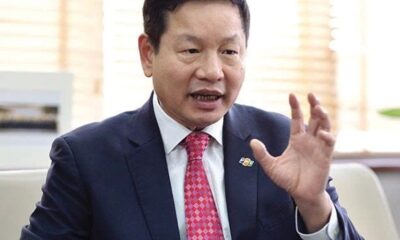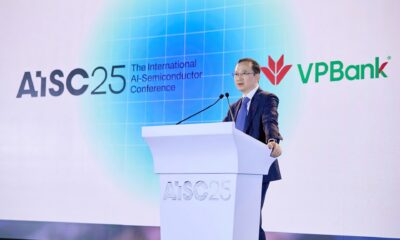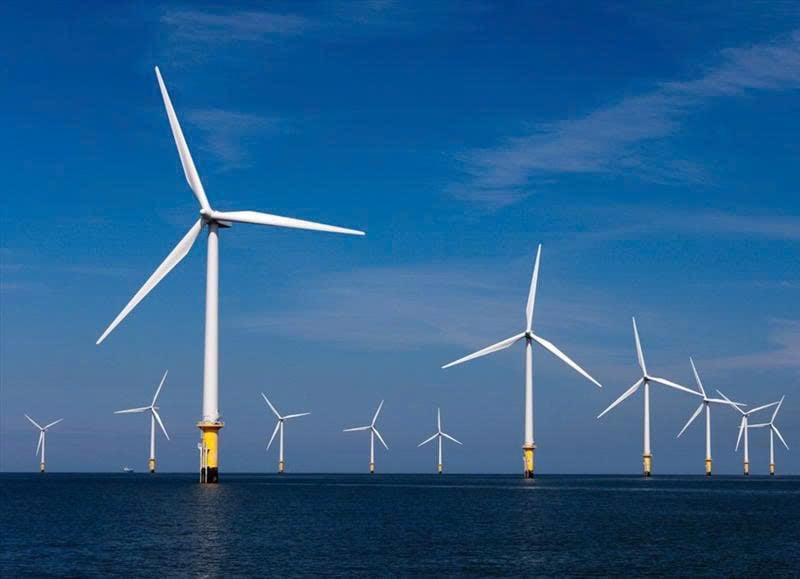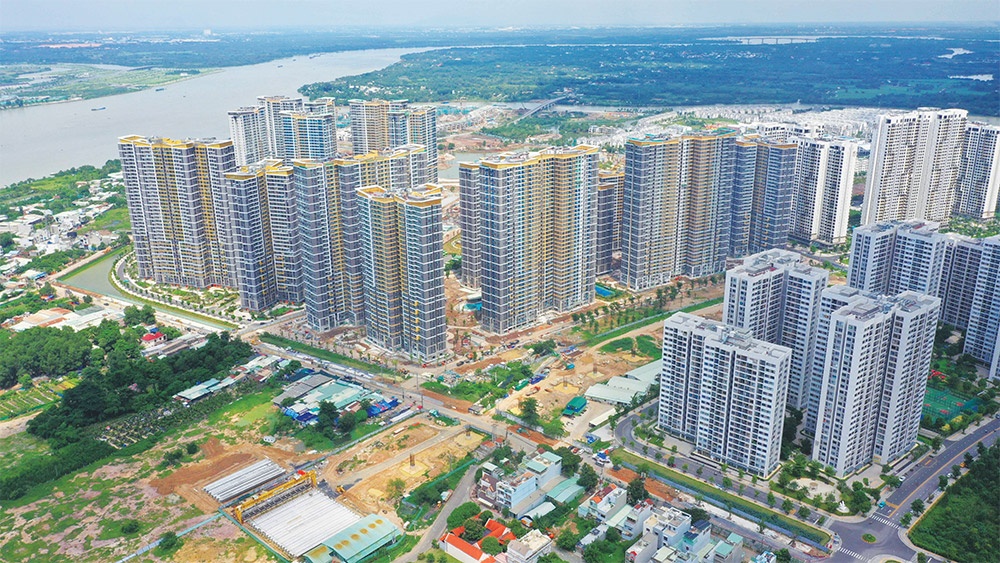Project
How AI transforms leader strategies
Published
10 months agoon
AI and generative AI have the potential to transform how strategists work by strengthening and accelerating activities such as analysis and insight generation while mitigating challenges posed by human biases and the social side of strategy. Building on the recent explosion in data and earlier AI advances that produced dramatic improvements in forecasting accuracy, the latest tools are making deriving insights much easier and cheaper.
 |
| How AI transforms leader strategies, Photo: Shutterstock |
The impact we are seeing in client organisations and in our own work as strategists leads us to view this moment as a new inflection point in strategy design – potentially on par with the creation of core strategic frameworks in the 1970s and 1980s.
While AI won’t change the need for leaders to demonstrate strategic courage by committing to big moves, we expect that the technology will, in time, enhance every phase of strategy development, from design through mobilisation and execution. But that’s just the beginning: strategy requires mobilising the organisation, ensuring the right allocation of resources, and monitoring execution. In all these tasks, AI can play a role.
Human judgment remains essential to crafting the strategic vision, which combines the organisation’s ambition with a view of how to realise it. However, AI can accelerate and bring greater rigour to the work of strategy teams. Even in these early days, we see five roles for AI: researcher, interpreter, thought partner, simulator, and communicator. Each of these roles can come into play at various steps across the different phases of strategy development.
Strategists spend significant time gathering and enriching data from numerous sources. AI’s ability to summarise and create meaningful connections across all data sets can significantly enhance these efforts. For example, an AI-powered engine that identifies potential merger and acquisition targets can pinpoint under-the-radar assets that fit a company’s strategic thesis, enhancing what today is often a serendipitous process relying on executives’ and their intermediaries’ market knowledge.
To turn data analytics into useful insights, strategists need to interpret how the findings can advance their goals. For example, a search for growth opportunities often entails looking into adjacencies. Those expansion ideas can come from many places, such as reviews of competitors’ moves or a deep understanding of customers’ emerging needs.
AI can also serve as a brainstorming partner, speeding up idea generation and countering business leaders’ potential biases or blind spots. GenAI in particular can help strategists avoid common pitfalls by assessing their plans against established frameworks. For example, a team can pressure test a strategy – both before and during its execution – by leveraging GenAI to play a challenger role to highlight potential hidden pitfalls or management blind spots.
Before committing to a strategic course, strategists consider the impact of multiple market scenarios based on macroeconomic conditions, potential competitor moves, and stakeholder reactions, among other factors. AI can make this scenario analysis much more rigorous through advanced modelling capabilities and tactical game and simulation applications.
A clear narrative of the strategic path and objective and their implications for the organisation and its stakeholders is essential to mobilising action. GenAI’s ability to summarise concepts in different formats has been among the technology’s most popular applications since ChatGPT was launched. Strategists can use GenAI tools to make their narratives more compelling to different audiences with different levels of expertise and in different formats.
Tools to get ahead
To see how these five applications can work in practice, consider the case of a Southeast Asian regional bank that wanted to expand to a new segment or geography. The strategy team used its AI model to analyse the business context and promising trends in the industry and region.
The tool generated interactive reports that allowed the strategists to fine-tune their follow-up research. Based on this work, the strategy team decided to focus on opportunities in the digital financial ecosystem and microcredit.
Next, the team asked AI to provide recommendations on the most promising adjacencies for growth investments. Based on an analysis of information from banks around the world, the tool created a graph of close and synergistic business segments.
To learn more about each segment, they asked AI relevant questions. The team also considered inorganic options such as partnerships and mergers. Based on an AI scan, they short-listed a few small and medium-size businesses with the technology the company needed to support its digital ambition.
Finally, as hypotheses solidified into concrete strategic options, AI helped the strategists simulate the resulting growth projections. Additionally, the tool utilised internal data, such as management reports on the bank’s earlier expansion into another country, to help management understand the strengths and weaknesses of their execution capabilities.
Numerous organisations have started building tools to make such scenarios a reality, with some developing proprietary AI agents to simulate reasoning or perform complex research tasks.
However, even those earlier in their AI journey can start exploring some of the roles that AI can play. As technology advances, strategists who build the skills to develop unique applications for AI models will gain a critical insights edge over competitors.
While the journey of the Southeast Asian bank is compelling, strategists should be mindful of several challenges in deploying AI. GenAI presents well-documented risks, ranging from model bias (historical training data can lead AI to overemphasise certain types of customers, for example) to reduced explainability (failure to offer a logical foundation for the analysis) and more.
The good news is that each of these pitfalls is being addressed. For example, AI can help police itself: a “critic agent” can check the work done by other AI applications and flag when the content might be incorrect or directly instruct a reworking of the task in question.
Considerations for leaders
Beyond these well-understood risks, GenAI presents five additional considerations for strategists. Firstly, it elevates the importance of access to proprietary data. GenAI is accelerating a long-term trend: the democratisation of insights. It has never been easier to leverage off the-shelf tools to rapidly generate insights that are the building blocks of any strategy.
Secondly, the proliferation of data and insights elevates the importance of separating signal from noise. This has long been a challenge, but GenAI compounds it. We believe that as the technology matures, it will be able to effectively pull out the signals that matter, but it is not there yet.
Thirdly, as the ease of insight generation grows, so does the value of executive-level synthesis. Business leaders cannot operate effectively if they are buried in data, even if that data is nothing but signal. As with GenAI’s growing ability to separate signal from noise, the technology is getting better at synthesis, but in the near term, strategy leaders need to own that task.
Fourthly, AI reinforces the importance of the processes that organisations follow to develop their strategies. Our research shows that the quality of the process is far more important to strategies’ success than the quality of insights. High-quality processes include, but are not limited to, the development and examination of strategic alternatives, properly accounting for uncertainty, pushing to make bold commitments, and, most importantly, taking steps to remove bias from decisions.
Finally, to successfully leverage GenAI, the strategy function needs to invest in technology for creating and accessing ecosystems of proprietary data sources. The ecosystem approach removes the need for companies to internally generate or own the full gamut of proprietary data. Instead, they build networks of sources that they can seamlessly tap into using technology.
So where do you begin? We recommend three near-term steps. First, the strategist of tomorrow needs to understand how AI works. Those who gain this expertise will be able to contribute to creating the tools their work requires, such as running complex simulations on how markets and competitive landscapes will evolve.
Secondly, AI is here to stay, and finding the right way to apply it to strategy development is essential. Strategy teams should familiarise themselves with the possibilities AI offers, from helping in their research and insight generation to identifying potential risks.
Finally, even with state-of-the-art capabilities, AI models will be limited to interpreting existing data – they cannot generate new signals.
For example, AI won’t replace the insights from ethnographic research or the direct input from customers. Indeed, such proprietary information will become even more critical to generating unique insights as external data grows more affordable and accessible to all market participants.
AI can’t, and we believe won’t, replace human logic and interpretation in a complex domain, such as strategy. However, the technology can provide faster, more objective answers that can significantly augment our decision prowess. By making the strategy development process more efficient while allowing the space for creativity and breakthrough ideas that help leaders define the consequent bold moves, AI can deliver the competitive edge needed to beat the market.
You may like
-


High-tech workforce creation must become front and centre
-


Investment required to exploit AI potential
-


Cisco to Deliver Secure AI Infrastructure with NVIDIA
-


Semiconductor industry rapidly evolving due to AI
-


VPBank builds digital branchless bank to serve millions of customers
-


Supermicro Brings Superior Performance and Efficiency to AI at the Edge
Project
Vietnam’s Exclusive Economic Zone boasts over 1,000 GW of wind power potential: report
Published
8 months agoon
April 27, 2025Vietnam’s Exclusive Economic Zone (EEZ) has a wind power potential of 1,068 GW, nearly 470 GW more than previously estimated, according to a report released Friday by the National Center for Hydro-Meteorological Forecasting (NCHMF).

An offshore wind power project in Vietnam. Photo courtesy of VnEconomy.
The report, titled “Detailed Assessment of Wind Resource Potential in Coastal (up to 6 Nautical Miles) and Offshore Areas in Vietnam,” was conducted by the NCHMF with support from the United Nations Development Program (UNDP) and the Norwegian Embassy.
This wind potential was measured at a height of 100 meters above sea level, said Mai Van Khiem, director of the NCHMF. He noted that from November to February each year, wind capacity accounts for half of the annual total – peaking in December and gradually decreasing, with the lowest levels recorded in May.
The southern offshore areas account for 894 GW of this potential, while the northern areas contribute 174 GW.
In nearshore zones (up to 6 nautical miles), the total technical wind power potential is 57.8 GW. The Bac Lieu-Ca Mau region alone contributes nearly 30% of this, while the Ninh Thuan-Binh Thuan area accounts for 24 GW. Although the Quang Tri-Hue region has lower potential, it offers stable wind speeds during the winter months. The Red River Delta has a modest potential of 0.17 GW.
Compared to previous assessments, such as the World Bank’s 2021 study and data from the Global Wind Atlas (GWA), this report provides more detailed and higher-resolution information, both spatially and temporally.
“Notably, the EEZ potential outlined in this report exceeds the World Bank’s estimate by 469 GW, primarily due to the broader scope of the survey and more refined climate modeling using domestic observational data,” the research team explained.
They also emphasized the use of the Weather Research and Forecasting (WRF) model customized specifically for Vietnam, which enhanced the accuracy of the results.
The findings are based on wind data collected from 26 coastal and island meteorological stations, satellite sources from CCMP, ASCAT, and SCATSAT-1 (covering 30 years of ocean surface wind data), as well as buoy data from Nghe An province and seabed depth measurements.
A key innovation in this report is the integration of potential impacts from extreme weather events. Typhoons and tropical depressions occurring between August and October pose structural and safety risks to wind turbines. Meanwhile, strong winds and high waves during the northeast monsoon season can hinder access to and maintenance of offshore wind systems.
To support model calibration and long-term observation, the research team recommends increased investment in offshore wind monitoring stations at heights exceeding 100 meters. They also suggest incorporating these findings into offshore wind development strategies and national marine spatial planning.
Additionally, the team advocates for expanding research into other forms of marine renewable energy, such as wave, tidal, and ocean thermal energy.
“Vietnam has some of the most promising offshore wind resources in the region, creating a strong foundation for the development of a large-scale offshore wind industry. This will contribute to energy security, green economic growth, and the achievement of net zero commitments,” they said.
The study provides a vital scientific basis for policy planning, identifying priority development zones, attracting investment, building infrastructure, and training the future offshore wind workforce, the team added.
Hoang Duc Cuong, deputy director of the Department of Meteorology and Hydrology, emphasized that Vietnam lies within a strong and stable Asian monsoon belt, giving it abundant wind energy potential. He noted that this renewable source will play a key role in meeting the country’s climate change goals and advancing a low-carbon economy.
However, he also warned that marine-based natural disasters are highly complex and could significantly impact the stability of offshore wind operations and energy generation.
The ever-changing status of the global economy following last week’s tariff shocks continue to loom large among investors in Vietnam’s real estate market.
 |
| All real estate segments are at risk of losing appeal if high global tariffs are eventually put in place, photo Le Toan |
Pham Lam, vice chairman of the Vietnam Real Estate Association, said that while it is premature to determine the full impact of new US import tariffs on Vietnam’s property market, early signs point to shaken investor sentiment and potential disruptions to foreign investment.
“If multinational corporations scale back or delay their factory expansion plans, the demand for land and factory leasing could decline, which may place downward pressure on industrial rents, lead to increased vacancy, and postpone new industrial zone developments,” he said. “This would affect key industrial property markets such as Bac Ninh, Bac Giang, Haiphong, Long An, and Binh Duong.”
Meanwhile, real estate expert Nguyen Hoang said that the United States remains one of the most critical export destinations for Vietnam’s foreign-invested enterprises.
“Any change in tariffs will significantly influence capital flows, investor confidence, and manufacturing strategies of companies operating in Vietnam. If a high tariff is fully implemented in 90 days, it could seriously diminish Vietnam’s investment appeal – affecting all real estate segments as a result,” Hoang said.
Vietnam’s property market has only recently emerged from a prolonged two-year downturn.
“It remains highly sensitive to economic and policy shocks. Investors have remained cautious, and any further external pressure could threaten to break the fragile liquidity recovery, potentially sending the market back into a period of short-term stagnation,” Hoang added.
Alex Crane, managing director of Knight Frank Vietnam, said that the recent tariff twists by the US casts a shadow of uncertainty, with potential implications for various segments of the market.
While manufacturing has shown resilience, it is still on the path to full recovery from the pandemic, particularly in labour-intensive sectors like garments and furniture. Tariffs imposed now would not have as severe an impact as they might have during Vietnam’s 2019 peak, but consequences are still expected, Crane said.
“I may expect that major transactions, especially those involving large capital outlays, are being paused or undergoing extended due diligence as investors and developers reassess assumptions and underwriting models and commercial occupiers are expected to defer large capital expenditures in the short term,” Crane said.
In addition, the response from the State Bank of Vietnam, particularly regarding monetary policy, will be crucial. While a rate cut may not effectively stimulate residential demand (as demonstrated in 2024), targeted lending for key industries and easing of loan-to-value ratios or debt-to-income limits for developers could provide relief.
“At present, most segments of the real estate market are in a holding pattern, awaiting clarity from the evolving negotiations between the Vietnamese and US governments. While uncertainty is unsettling, Vietnam’s underlying fundamentals remain sound, and the market’s long-term outlook is still viewed positively,” he added.
Nguyen Dung Minh, deputy CEO of MIK Group, has warned that under the new US tariff regime, many investors will be forced to reassess their strategies, likely leading to a decline in the demand for industrial land.
“Investors will need time to re-evaluate their actual demand and incoming orders and make necessary adjustments before they can fully gauge the extent of the impact,” Minh said.
He added that the implications go beyond just industrial land. “The new US tariffs are also expected to disrupt supply chains and negatively affect supporting sectors such as logistics, warehousing, and raw materials manufacturing. As production slows, so too will the demand for land associated with these services,” Minh said.
| Trang Bui, country head Cushman & Wakefield Vietnam
While the effects of tariffs are typically delayed, most economists warn that they may eventually fuel inflation and dampen economic growth. Many manufacturing firms could opt to postpone their expansion plans in the short term if export duties become too burdensome. There is also a possibility that some companies may look to diversify their supply chains towards a Vietnam+1 model, shifting parts of their operations to neighbouring countries. This could lead to a decline in demand for factories and warehouse leasing, two key drivers of the industrial real estate segment. However, it is important to recognise that industrial real estate is fundamentally a long-term investment. Vietnam has long positioned itself as the manufacturing hub of Southeast Asia, thanks to its strategic location and the “bamboo diplomacy” approach, which has enabled the country to swiftly join trade negotiations and sign multiple free trade agreements. Moreover, many manufacturers in Vietnam have already established tightly integrated supply chains. As such, their investment plans tend to operate on a much longer time horizon than the near-term effects of tariff policy. Relocating supply chains typically requires at least 3–5 years, making short-term shifts less likely. Overall, Vietnam’s industrial real estate sector has proven resilient under various political and economic conditions. Investors would do well to focus on long-term trends and structural advantages. Manufacturers, in particular, may take this opportunity to secure high-quality industrial assets, invest in automation, and pull in skilled labour, while continuing to monitor developments in upcoming trade negotiations with caution. Nguyen Thi Bich Ngoc, CEO, Sen Vang Group When it comes to the reciprocal tariff policy announced by the US, the greater danger currently lies not in the tariff itself, but in the heightened sense of uncertainty it has triggered across the Vietnamese market, a sentiment clearly reflected in recent VN-Index fluctuations. In the short term, the policy will weigh heavily on Vietnam’s industrial real estate sector. However, in the long run, this challenge could serve as a catalyst for stronger growth. It presents an opportunity for the government and industrial zone developers to rethink their strategies, offering more competitive, attractive solutions to both foreign and domestic investors. Rather than relying solely on external trends like the China+1 shift, Vietnam should leverage its inherent competitive advantages, including a strategic geographic location, a skilled and cost-effective labour force, and political stability, to pull in long-term investment. These are undeniable strengths that set Vietnam apart. Moreover, this is also an opportune moment for Vietnam to re-evaluate and restructure its key sectors, prioritising strategic industries with high growth potential. Continued engagement in bilateral and multilateral trade agreements will open up new opportunities and elevate Vietnam’s position both regionally and globally. Ultimately, we must seize this challenge as a turning point, transforming pressure into momentum for sustainable development. Vo Hong Thang, Investment director DKRA Group The industrial infrastructure, commercial, and residential real estate segments are all likely to face increasing headwinds if a huge tariff increase is eventually implemented. In recent years, a number of developers have made significant investments in industrial zones, betting on a continued influx of foreign direct investment. However, the new tariff policy raises the possibility of such flows being diverted to other countries. Vietnam now faces the risk of having built the nest, but being unable to attract the eagle. In addition, liquidity in both residential and commercial real estate, including retail, office, and hospitality, is likely to weaken in the short term due to more cautious investor sentiment, defensive capital flows, and reduced purchasing power from end-users. Niche investment segments such as serviced apartments, tourism-related accommodations, and foreign buyer housing could also see demand drop, particularly as the foreign expert and executive workforce, typically a key demand driver, scales back plans to live and work in Vietnam. |
Project
Central Vietnam city seeks $1.84 bln for 15 projects in economic zone
Published
8 months agoon
April 26, 2025Authorities of Hue city in central Vietnam have released a list of 15 projects in Chan May-Lang Co Economic Zone which will need VND47.5 trillion ($1.84 billion) in investment capital between 2025 and 2026.

Chan May-Lang Co Economic Zone in Hue city, central Vietnam. Photo by The Investor/Dinh Duy.
Notable projects include the Chan May non-tariff zones No. 1 and 2 infrastructure development project, with a total area of over 503 hectares and combined investment capital of VND2.8 trillion ($108.23 million).
Another is the VND20 trillion ($773 million) Chan May Urban Area project (locations 1 and 2), which will cover 225 hectares and be implemented over five years.
The LNG terminal project at Chan May Port, 27 hectares with an investment of VND8.6 trillion ($332.43 million), is set for five-year implementation.
The 120-hectare Bai Ca eco-tourism project in Lang Co township will have investment capital of VND2.5 trillion.
The Lang Co beach resort, with an area of 45 hectares and total investment of VND4 trillion ($154.62 million), will be carried out over five years; while the 75-hectare Lap An lagoon tourism, urban development and resort complex in Lang Co township will cost VND6 trillion.
According to the management board of Hue Economic and Industrial Zones, since its establishment, Chan May-Lang Co Economic Zone has attracted 55 investment projects which remain valid, with total registered capital of VND97.32 trillion ($3.76 billion).
Among these, 15 are foreign-invested projects with combined capital of VND56.02 trillion ($2.17 billion), accounting for 57.56% of the total.
Several prominent foreign investors have established a presence in the zone, such as Banyan Tree Group (Singapore) with the Laguna Lang Co Resort and Winson Group (Taiwan) with the Billion Max Vietnam Export Processing Factory.
Chan May-Lang Co has become a destination for investments in sectors like tourism and resort development; seaport infrastructure; logistics; clean industry; and high-tech, environmentally friendly industries, with annual revenue reaching nearly VND4 trillion ($154.62 million) and tax contributions of around VND300 billion.
The management board said Hue city has proposed the Ministry of Construction review the adjustment of the EZ master plan through 2045, for submission to the Prime Minister.
The strategic goal is to develop Chan May-Lang Co into a key economic zone of central Vietnam – a coastal gateway offering logistics services for the central region and the East-West Economic Corridor, as well as a hub for high-end tourism services.
To attract investors, the local government will offer a range of incentives such as a 10% corporate income tax rate for 15 years from the first year the project generates revenue; import tax exemption for goods to create fixed assets for investment projects, and land and water surface rental exemptions, the board said.

Bac Giang International Logistics Centre launched

Vietnam’s Exclusive Economic Zone boasts over 1,000 GW of wind power potential: report

Uncertainty weighing on real estate

Central Vietnam city seeks $1.84 bln for 15 projects in economic zone

